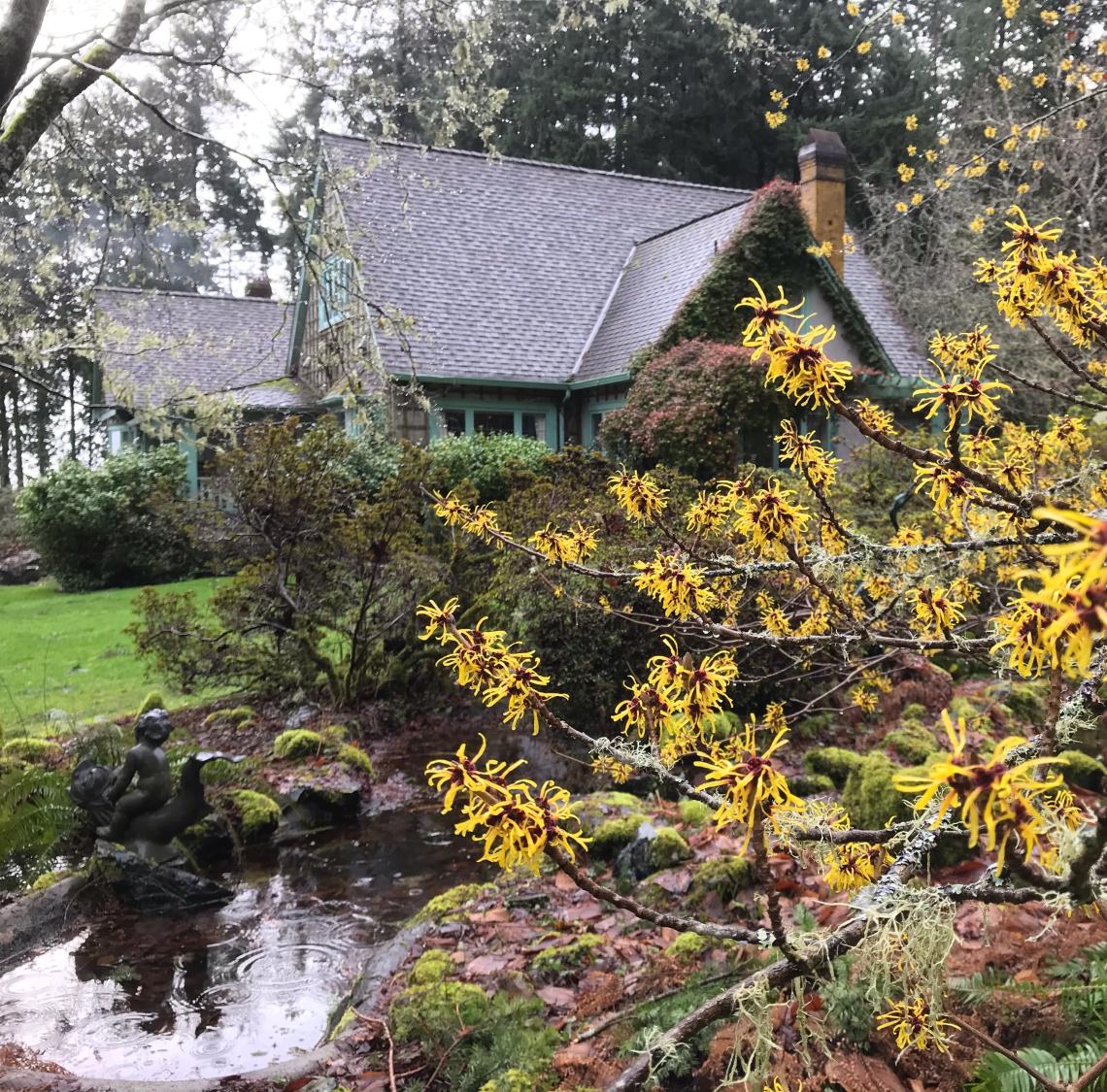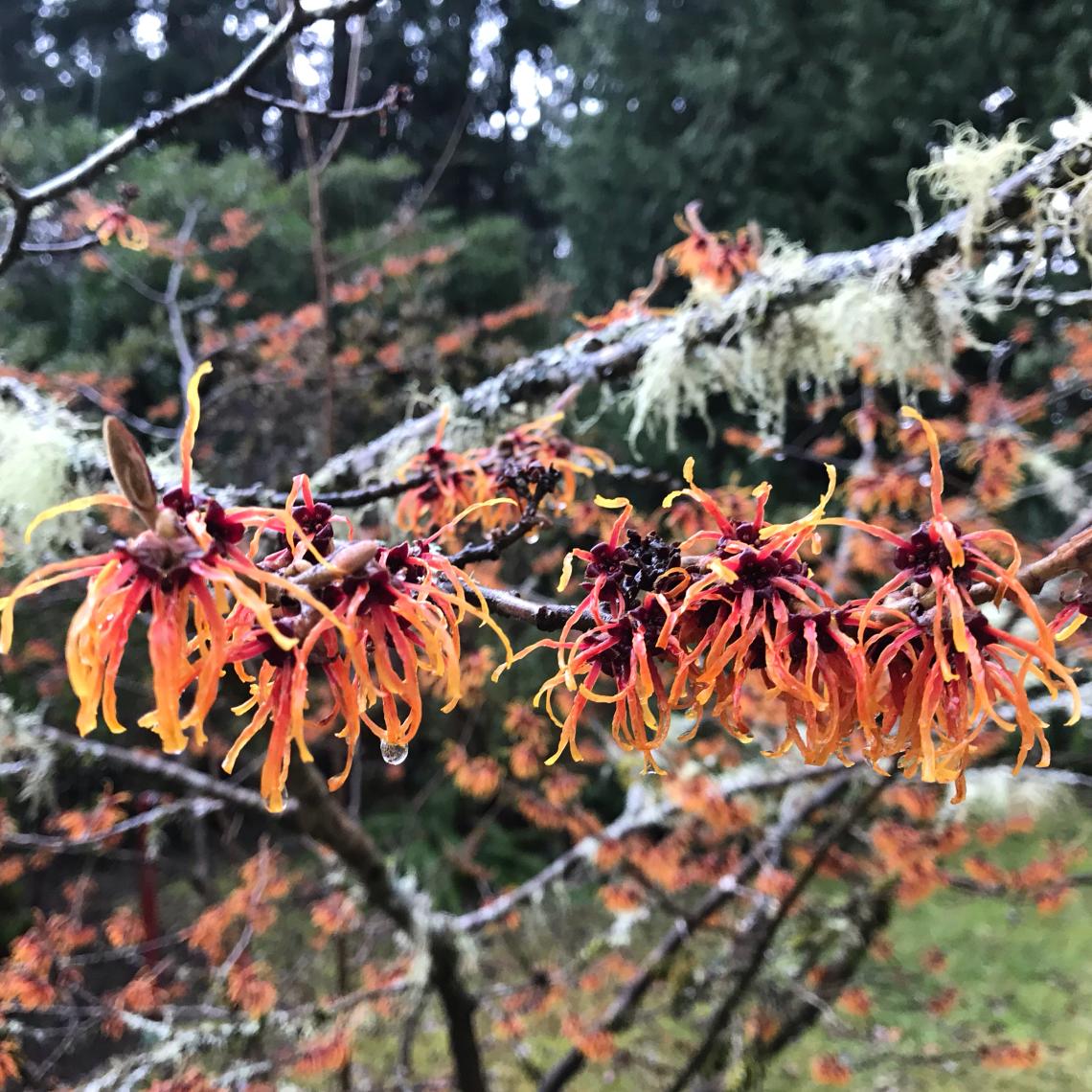Latin name: Hamamalis mollis
by Vancouver Island Master Gardeners Association
A deciduous shrub known for its early winter flowering with great fall colour and fragrant to boot, the Chinese Witch Hazel (Hamamelis mollis) is an easy care plant once established. There are several varieties to choose from all under the ten to twelve foot high (3m x 3m) range, moderate growth rates and once established require moderate water needs.
An open but top rounded shrub the Witch Hazel has obovate tipped leaves, with a dark wavy edged green top and a “felted” gray cast below. The leaves turn colour in the fall starting with yellow, then orange and finish scarlet to end the season. By late January/February, the four ribbon shaped petals with four stamens emerge, fragrant and in clusters to be the harbingers of spring! Seed pods expel up to two shiny black seeds one full year after pollination.

Hamamelis mollis. Photo courtesy Milner Gardens & Woodland.

Hamamelis x intermedia 'Jelena'. Photo courtesy Milner Gardens & Woodland.
|
Attribute |
Description |
|---|---|
|
Form: |
Rounded open topped shrub. |
|
Foliage: |
Broadly obovate at tip and narrow acute at the base, smooth shiny, feels “thick”. |
|
Height/Width: |
3m x 3m high and wide. |
|
Hardiness Zone: |
6 |
|
Exposure: |
Full sun to flower best, out of cold winds. |
|
Flower colour: |
Range from yellows (‘Arnold Primrose’ and ‘Pallida’), copper (‘Jelena’) and red (‘Diane’) among others. |
|
Leaf colour: |
Dark green above, wavy edged and grayed below, with a soft hairy feel. |
|
Flower time: |
Late February to March. |
|
Preferred soil and Watering: |
Average soil seems to be adequate, but acidic and well drained are essential. Organic rich soils and/or mulches are very helpful. Requires regular watering to establish itself but from there can be quite tolerant of dry conditions although you may see leaf scorch during particularly hot summers. |
|
Other: |
Requires little if any pruning after flowering, but the occasional sucker may need trimming from the base (they are often grafted onto H. viginiana). |

